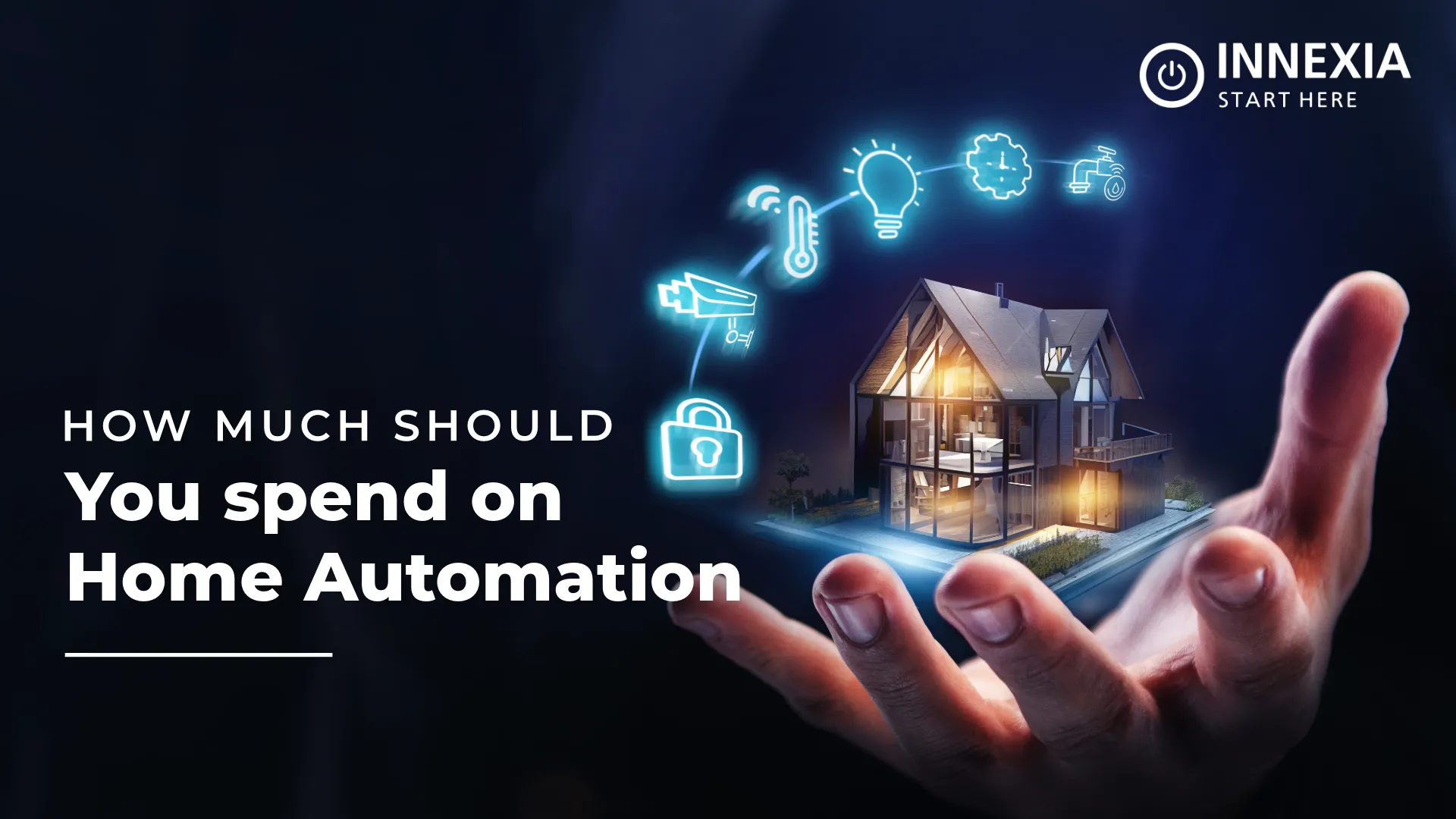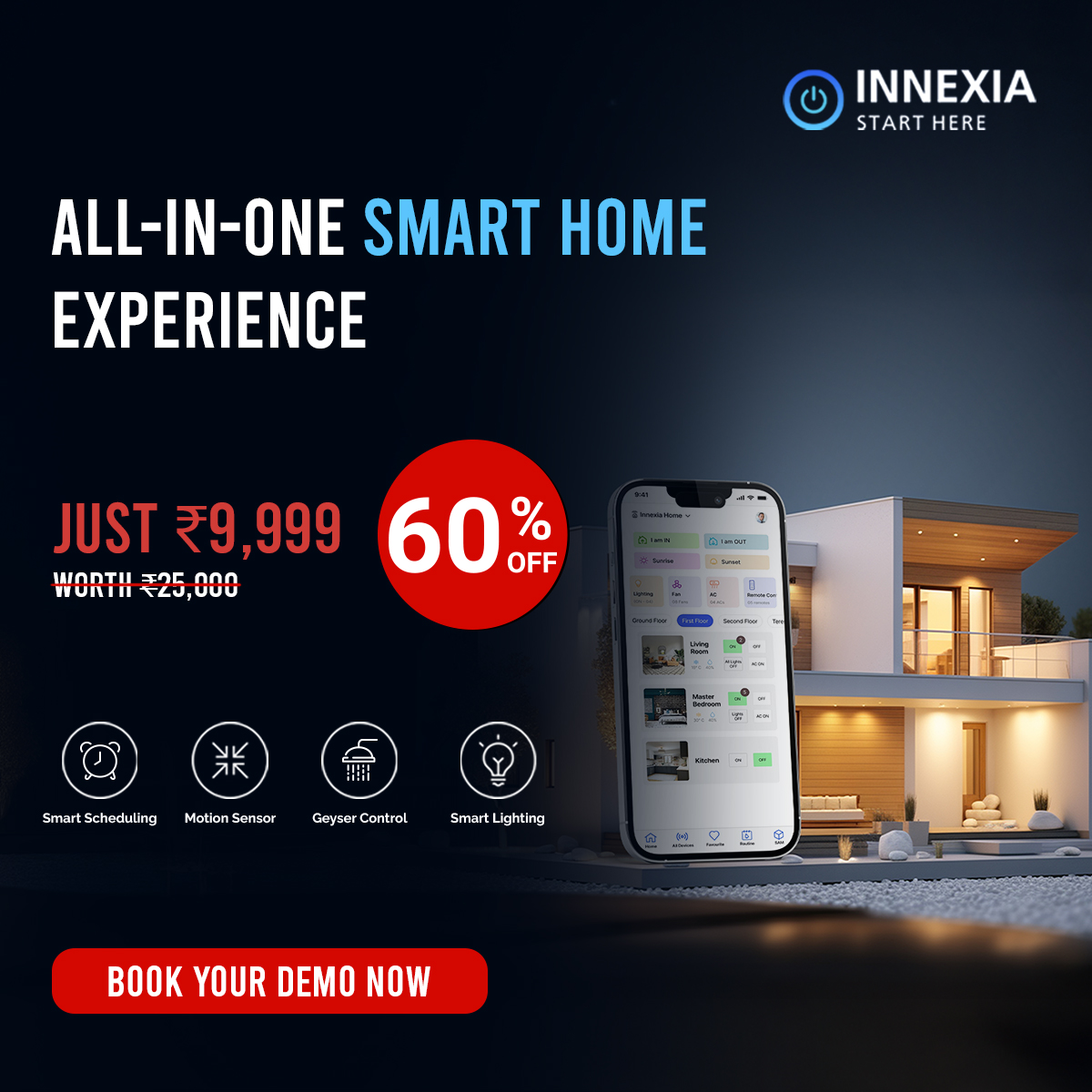The cost of automating your home depends on the type of system you choose and how personalized you want it to be. Factors like the size of the space, the number of devices, and the level of control you need also play a role.
In India, smart home automation costs can start from ₹50,000 and go up to ₹5,00,000 or more, depending on your setup. For a simple start, you can begin with smart lighting and basic sensors for doors or windows. A fully automated home may include everything from voice-controlled lighting to climate control, security systems, and smart entertainment.
Cost Estimates for Home Automation in India
The cost of home automation depends on the features you choose and how smart you want your space to be. Here’s a simple breakdown to help you understand the general pricing:
Basic Setup
If you’re starting with smart lighting and basic security, expect to spend between ₹50,000 and ₹2,00,000. Ideal for small apartments or first-time users.
Mid-Range Setup
If you’re looking for more control—like smart ACs, entertainment systems, and added convenience—expect to spend around ₹2,00,000 to ₹5,00,000. This setup suits mid-sized homes and growing families.
High-End Setup
Homes with complete automation, voice-activated controls, and premium devices usually start at ₹5,00,000 or more. This is perfect for large homes or those wanting complete smart integration.
No matter the budget, home automation system offers added comfort, better control, and improved security. Choose what fits your lifestyle best.
What Affects the Cost of a Smart Home System?
No two smart home automation costs are exactly the same—they depend on your plans. It changes based on your home, your choices, and other important factors. Here’s what mainly affects the cost:
- Size of Your Home
Big homes need more devices, wiring, and installation work, which drives up the overall cost. Smaller homes use fewer components and require less labor, making automation quicker and cheaper. - Type of Smart Features You Choose
The features you pick greatly affect the price. Luxury smart home systems require more complex installation, while basic setups like smart lights or plugs are simpler and more budget-friendly. - Brands Used in Your Setup
Top smart home brands provide superior performance, greater reliability, and excellent support, though they come at a higher price. Choosing budget brands might cost less upfront, but can result in more repairs and less reliable performance. - Electrical Condition of Your Home
Older houses often have old wiring and fewer electrical outlets. Upgrading electrical systems is often necessary for safe automation, increasing the overall project cost, especially in older or traditionally built houses. - Ongoing Subscription Fees
Some smart systems require monthly or yearly subscriptions for full functionality. Features like remote access, cloud storage, or updates may cost extra, so it’s important to check before installation begins.
Cost-Saving Tips for Smart Home Setups
- Start Small, Upgrade Gradually
Start with basic features such as smart lighting or security systems. Add more devices over time. This helps manage your budget without compromising the benefits of a future-ready smart home system. - DIY Installation
If you’re comfortable with technology, setting up smart devices on your own can cut costs. Many systems are user-friendly and come with easy guides, helping you avoid the extra cost of professional installation services. - Look for Deals and Discounts
Check for bundle offers, festive sales, or seasonal discounts on smart devices. Buying during promotions can help you get more features for less, making automation more budget-friendly. - Compare Vendor Quotes
Don’t settle on the first offer. Request quotes from multiple providers, compare pricing and features, and choose the one offering the best value for your needs and long-term use. - Invest in Energy-Efficient Devices
Choose smart thermostats, LED lighting, and energy-saving appliances. These reduce electricity consumption and lower monthly bills, offering cost-effective automation and long-term savings for your smart home setup. - Choose Reliable Brands with Good Warranties
Choose reliable brands that offer solid warranties and good customer support. This reduces the risk of future repair or replacement costs and ensures long-term peace of mind.
Conclusion
Transforming your house into a smart home brings comfort, better control, and improved energy efficiency. Whether it’s a simple setup or full automation, understanding the cost and benefits is important.
As a trusted home automation company in Ahmedabad, Innexia offers personalized solutions that match your lifestyle. Our team handles everything—from planning to professional installation—making your upgrade smooth and stress-free.
Get in touch with Innexia today and take the first step towards a smarter, more connected home.




